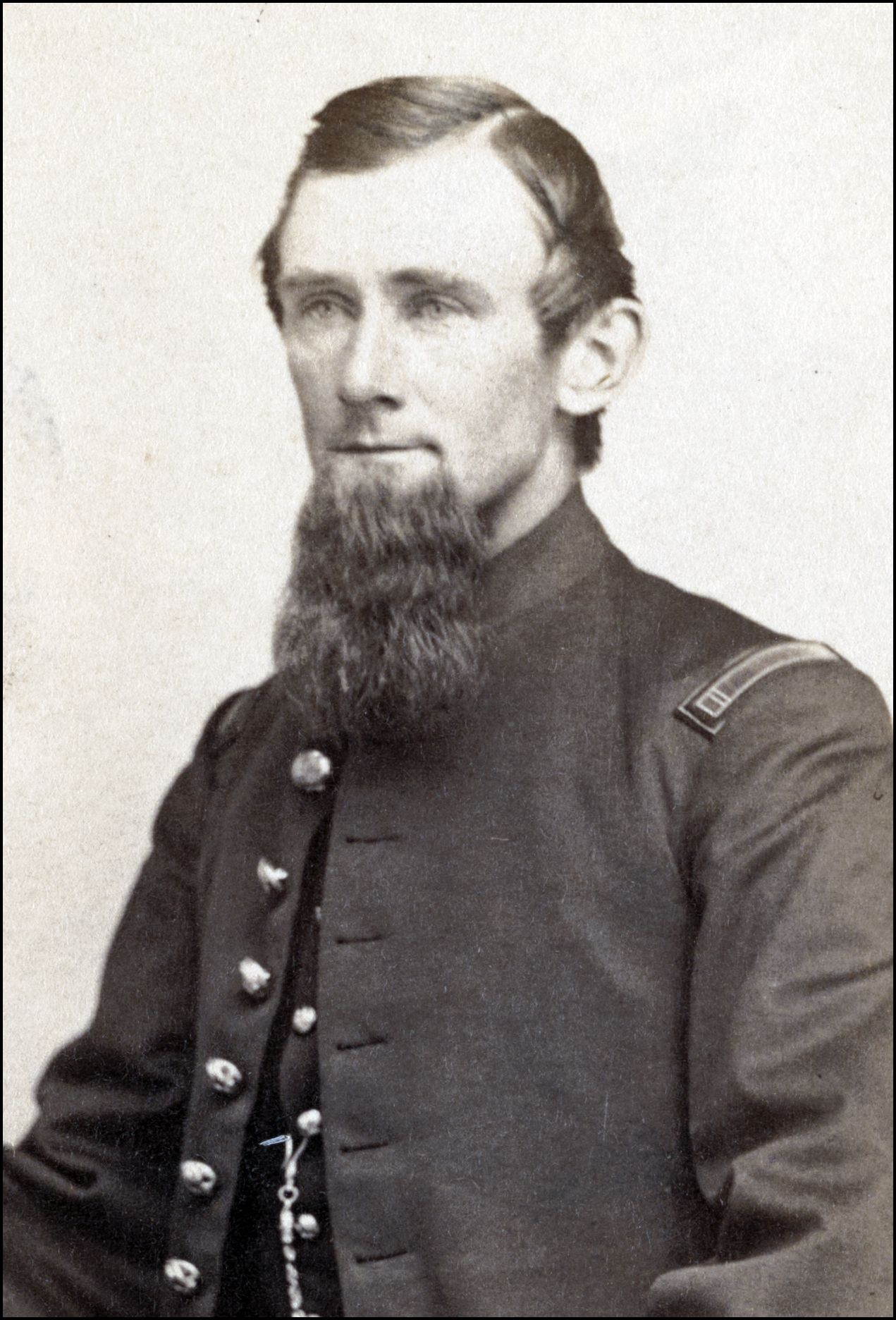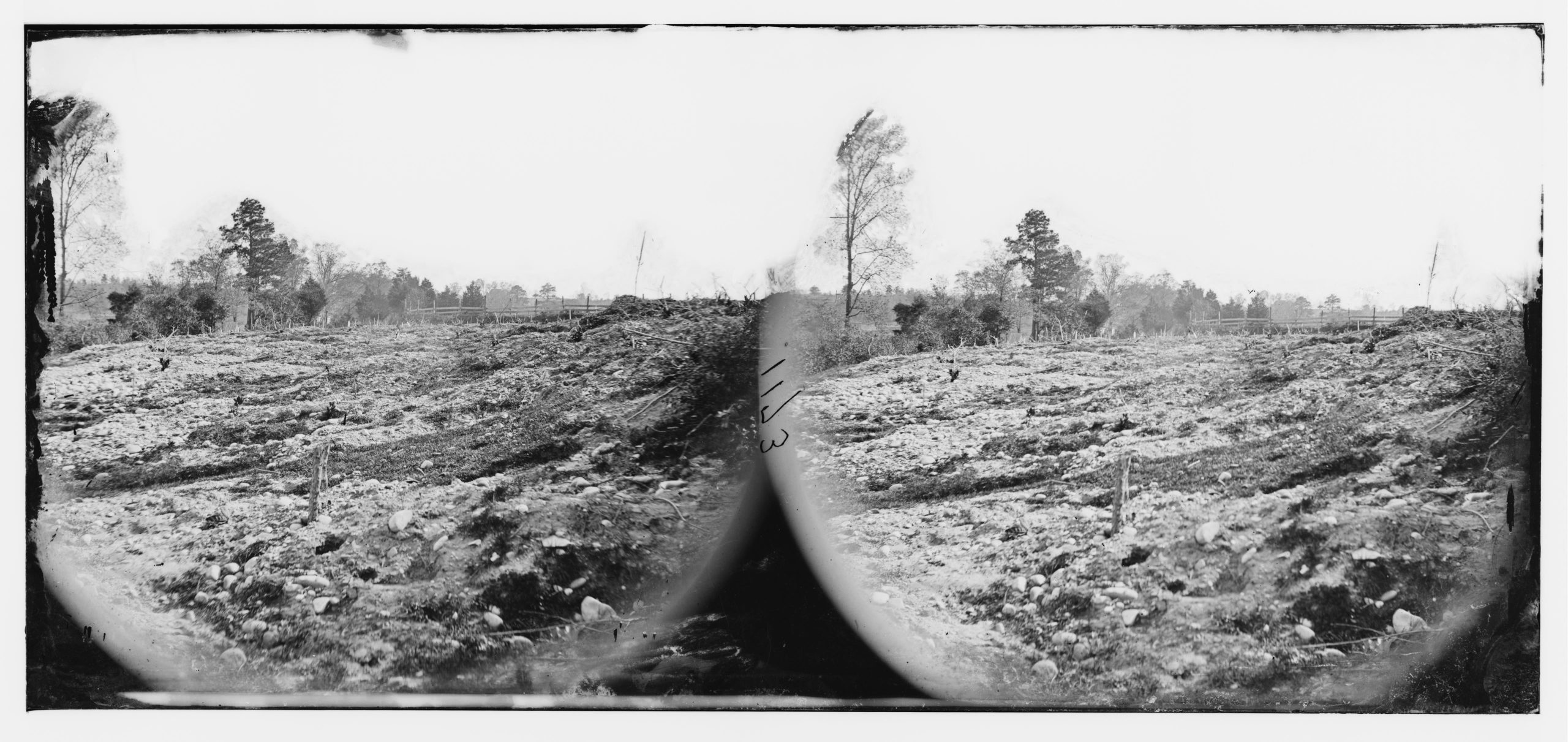Research Arsenal Spotlight 12: Rufus P. Staniels 13th New Hampshire Infantry

Rufus Putnam Staniels was born in 1833 in Chichester, New Hampshire to Charles Herbert Staniels and Elizabeth N. (Johnson) Staniels. He enlisted in Co. C of the 13th New Hampshire Infantry as a private in August, 1862, and was mustered in as a second lieutenant in the same company. On February 20, 1863, he was appointed first lieutenant of Company H. Rufus P. Staniels wrote most of his letters to Selina Aiken Cook, whom he married after the war on November 28, 1865. The vast majority of the letters in this collection were written during 1864, though there are also a few from 1862.
Changes in the 13th New Hampshire Infantry
While Rufus P. Staniels joined the 13th New Hampshire when it was first formed in 1862, by February, 1864 it was undergoing some drastic changes in the men that made it up. In a letter to Selina Cook dated February 5, 1864, he outlined a few of those changes. The first of the changes was the addition of substitutes into the service, some of which were very unreliable, as Rufus P. Staniels described:
“One of the men of old “H” came in to see me last night (one of the subs). Said he had lost every cent of his money ($76.00). Another sub, his tent mate, got it away from him by gambling. He did not even pay the sutler whom he owes I found today $15.00. He wanted to know if there was not some way by which he could get his money back again, but the one who won it from him went away yesterday A. M. & we have not seen him since — presume he has deserted. The introduction of these subs & new recruits into the regiment has changed it very much & not for the better.”
A second source of changing personnel was that many of the regiment’s initial soldiers and non-commissioned officers were leaving for appointments as commissioned officers in the various US Colored Troops regiments that had begun forming.
“Quite a number of non-commissioned officers & privates from this regiment have been up to Washington and been examined for positions as officers in negro regiments & the most of them have been successful, receiving appointments as captains, & 1st and 2nd lieutenants. I think as many as a dozen have already received appointments from this regiment. One of the sergeants of old “H” went up the other day & got an appointment as captain. The orderly sergeant is going up the first of the week to be examined.”
In a letter from February 18, 1864, Rufus P. Staniels related another story of substitute who was coerced into enlisting under promise of a bounty that never fully materialized and wanted to get his discharge.
“He says that when they arrived at Concord, he went to a saloon together with the man who had engaged him & also met another man there. Was invited to drink liquor several times but refused and was finally told by them that business was dull & he had better enlist & he finally yielded on condition that they should pay him $275.00. They paid him $175.00 & told him they would pay the other hundred in ten days since which he has seen neither men or money. And what they did pay him was stolen from him a few days after coming into camp. His age is 16 last May but he gave it as twenty through their influence. So you can see by this the manner in which many of the subs were obtained last fall. He is a pretty smart boy, wholly uneducated, & seems disposed to do his duty & is not very anxious to get out of the service — only on account of his mother, he says. I do not think they will succeed in getting his discharge.”
Rufus P. Staniels Wounded at Cold Harbor

On June 1st, 1864, Lieutenant Rufus P. Staniels was severely wounded at the Battle of Cold Harbor. While advancing with a line of skirmishers, he was struck in the right clavicle by a minié ball which shattered the bone and lodged in the lower part of his right lung. There is a long account of Rufus P. Staniels’ injury in the regimental history of the 13th New Hampshire Infantry based on letter he wrote in 1887 to the book’s author, S. Millet Thompson.
Salina Cook received a rather alarming letter a few days after the battle, written by Quartermaster Sergeant Charlie Ames of the 13th New Hampshire Infantry.
“Miss Cook,
At the request of Lt. Staniels I write you a few lines this morning to inform you of his safe arrival here in the hospital. In a recent engagement upon the 1st of June at Cold Harbor during a charge made by the 2nd Brigade he received quite a severe wound in the right shoulder which prevents him from writing you, but do not give yourself any uneasiness concerning him — his wound is not dangerous, has been dressed and is doing nicely. He is in the best of spirits & sitting near me on the bed. He will doubtless go from here to some general hospital in a day or two and requests me to say that he will write to you again as soon as he is located. The 13th N. H. lost quite heavily. The Col. was slightly wounded by a spent ball. Two Captains & two lieutenants wounded. Number killed about 15, wounded 50, missing 15.”
On the 9th of June, 1864, Rufus P. Staniels was able to write a short note to Salina of his own:
“I arrived here last night in good condition. My wound is pretty painful but I think is doing well. We are resting good here. I shall try & start for home in a day or two. I would love to be there now. Please do not give grounds for any uneasiness. Excuse brevity.
Yours as ever, — Rufus.”
Rufus P. Staniels’ Promotion to Captain and Service as Assistant Adjutant General
On July 15, 1864 Rufus P. Staniels was promoted to captain of company H, though he remailed in the hospital. After several weeks recovering from his wound, Rufus P. Staniels paid a visit to his regiment on July 31, 1864 which he then detailed in a letter to Selina on August 3, 1864. He was met with a grizzly sight of wounded men from both armies being left on the field while commanders tried without success to arrange for a flag of truce to remove and care for them:
“On Sunday [31 July] I started out again as our regiment had not come in & found it after awhile occupying the front line of works & directly in front of the ruins of the fort. The reb lines run along about 25 to 35 rods [140-200 yards] in front & on a line with the destroyed fort. The field between the two lines was literally strewn with the dead & wounded which had been left upon the field & in some places near the fort they lay in piles. Several flags of truce went out from our line during the P. M. & were met midway between the lines by a reb truce & our officers made every effort to arrange for the burial of the dead & care of the wounded, but for some reason or other it could not be satisfactorily arranged & consequently the wounded men still left to suffer until agony from hunger & thirst & the scorching rays of the sun. When the flags were out, it was of course a signal for a cessation of hostilities & we would mount the works & look over the field & at the rebs & the rebs would look at us. The smell of the dead was very offensive & it was enough to make one sick at heart to look over that field & see the poor sufferers moving their handkerchiefs or caps & trying to drive away the flies & we could well imagine the condition of their wounds. I believe that early in the morning they had run out a flag of truce & had supplied some of them with water & our boys observed several instances where the rebs carefully raised & gave water to our wounded negro soldiers who had been left upon the field.”
After the visit, Rufus P. Staniels returned to the hospital to continue his recovery. On November 19, 1864 he was appointed as an Acting Assistant Adjutant General for the 1st Brigade, 1st Division, 18th Army Corps. He mustered out on June 21, 1865 and died January, 4, 1890.
We’d like to give a special thanks to William Griffing of Spared & Shared for transcribing and sharing these documents.
The full collection of Rufus P. Staniels, as well as thousands of other Civil War letters and documents can be accessed with a Research Arsenal membership.
If you enjoyed this article, check out some of our other spotlight collections like the US Cavalry Returns and the collection of letters from Edward Horatio Graves of the 10th Massachusetts Infantry.

